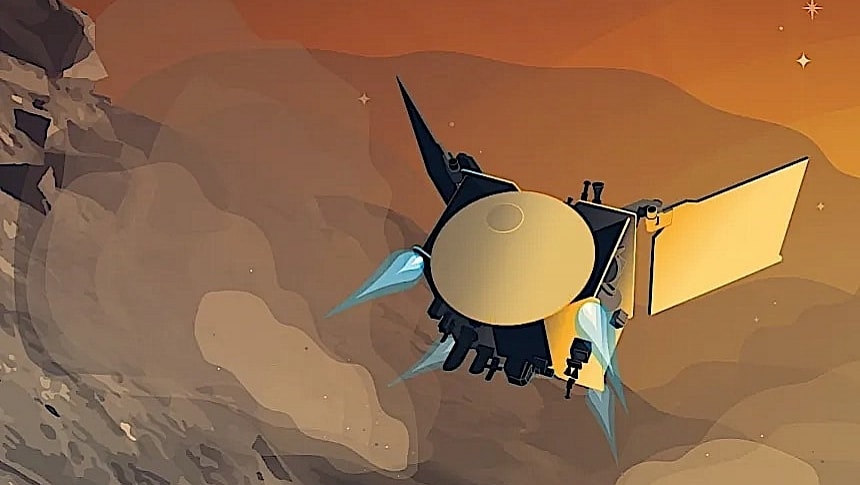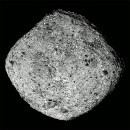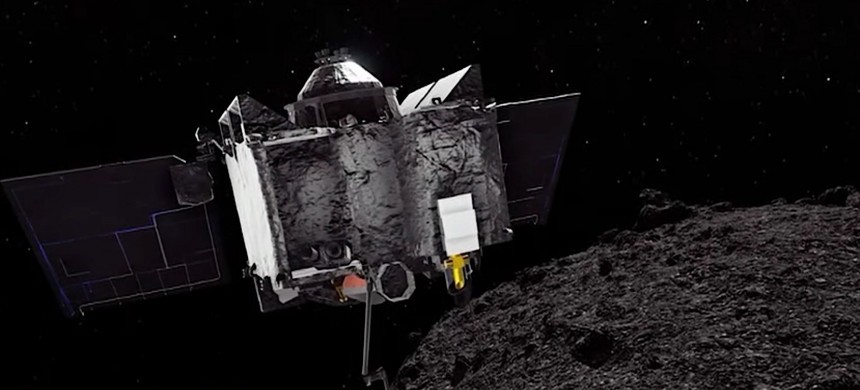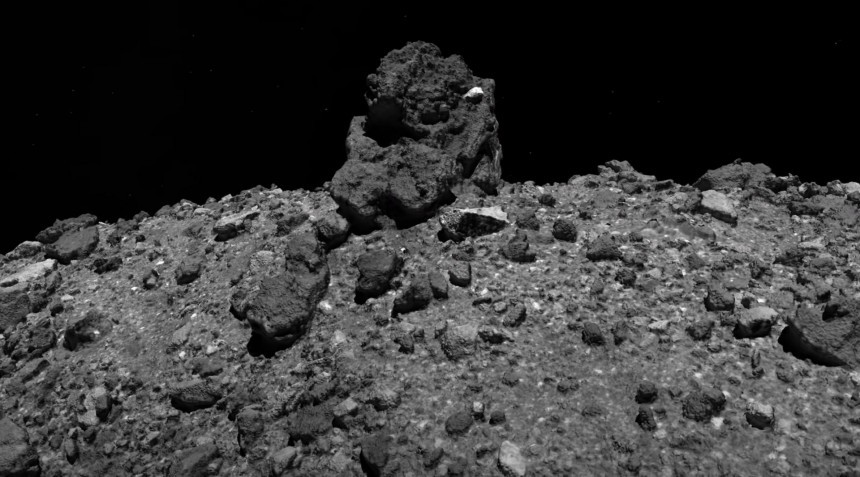There are several human-made spacecraft currently roaming the solar system, each tasked with a specific mission. Only one of them, however, completed its initial task and it is currently on its way to end its second assignment: the Origins, Spectral Interpretation, Resource Identification (OSIRIS).
The spacecraft was launched in 2016, and it was initially called OSIRIS-REx. The REx particle stands for Regolith Explorer and it's there because the ship's first mission was to find an asteroid called Bennu in the darkness of space and snatch samples off of it.
OSIRIS more than fulfilled its task, and in September 2023 it delivered 8.8 ounces (250 grams) of asteroid material back to Earth. NASA is presently analyzing the samples, as we're still waiting for the catalog of all the Bennu samples we were promised.
The spacecraft did not land to deliver the samples, it only sent back a capsule. The bulk of the hardware remained in Earth orbit, and given how it looked like it still has some kick left in it, the decision was made to repurpose it.
And that's exactly what happened when NASA decided to send OSIRIS on a trip out to one of the most infamous asteroids we know of, the mighty and relatively scary Apophis. To reflect the ship's new mission, which is to survey the asteroid (no samples returning this time), the REx particle in the mission's name was replaced with APEX, a word that stands for Apophis Explorer.
The OSIRIS-APEX is scheduled to reach its target sometime close to the end of the decade, but several hazards lie on the way. One of them was a close encounter with the Sun the spacecraft was never designed to withstand.
At the beginning of the year, on January 2, the ship came 25 million miles (40 million km) closer to the Sun than its specs sheet said it was advisable (we're not given the exact distance to the Sun). Naturally, most of its systems were not active during this close pass, but NASA believed OSIRIS would make it. It couldn't be sure of the outcome for months, though, as the spacecraft first had to put some distance between it and the Sun before getting its systems up and running again.
This week NASA announced that the mission is still a go, after stored telemetry data was downloaded in March and tests on the onboard instruments were performed in April. And it is here where the space agency says it came across a surprise.
NASA says that OSIRIS' instruments not only survived, but some of them also performed better than expected. Heat, is seems, works wonders for them, especially given up there in space hardware is subject to natural annealing – "a heat process that can restore function of instruments and is often done intentionally through built-in heaters on some spacecraft."
One of these instruments is a camera that was used to map Bennu during the ship's first mission to space. In this case, the hot pixel count (that would be the white spots space cameras usually show in images because of high-energy radiation buildup) dropped by 70 percent compared to about a year ago. And that's a good thing, as the same camera will be used to map Apophis.
The fact the spacecraft survived is not only owed to smart engineering, but also to the efforts made on Earth to protect the ship from damage.
Before coming close to the Sun, OSIRIS was instructed to get in a fixed orientation with respect to the Sun. One of its solar arrays (there are two of them) was positioned in such a way as to shield the most sensitive components.
This is the first so-called close perihelion pass, but by no means the only close encounter with the Sun OSIRIS will have to survive. Because the nature of its mission requires it to perform an elliptical orbit around the star, it comes really close to it every nine months (the point of closest approach is called perihelion). So, a lot more challenges lie ahead until it meets up with Apophis in 2029.
The asteroid OSIRIS plans on visiting next was discovered in 2004. It's 1,100 feet (335 meters) across and it was initially described as "one of the most hazardous asteroids that could impact Earth."
2029, the year when the spacecraft will reach it, has long been believed to be the year when Apophis had a non-negligible chance of hitting Earth. Another potentially dangerous encounter could have happened in 2068.
Astronomers now say there is no risk of that happening, and that Apophis will not endanger our planet in any significant way for the next century or so. At least that's what we know now, according to the most recent calculations, performed back in 2021.
It was determined then that the piece of space rock would pass less than 20,000 miles (32,000 km) from Earth's surface in on April 13, 2029, uncomfortably close but still far enough for it to not pose any danger.
OSIRIS more than fulfilled its task, and in September 2023 it delivered 8.8 ounces (250 grams) of asteroid material back to Earth. NASA is presently analyzing the samples, as we're still waiting for the catalog of all the Bennu samples we were promised.
The spacecraft did not land to deliver the samples, it only sent back a capsule. The bulk of the hardware remained in Earth orbit, and given how it looked like it still has some kick left in it, the decision was made to repurpose it.
And that's exactly what happened when NASA decided to send OSIRIS on a trip out to one of the most infamous asteroids we know of, the mighty and relatively scary Apophis. To reflect the ship's new mission, which is to survey the asteroid (no samples returning this time), the REx particle in the mission's name was replaced with APEX, a word that stands for Apophis Explorer.
The OSIRIS-APEX is scheduled to reach its target sometime close to the end of the decade, but several hazards lie on the way. One of them was a close encounter with the Sun the spacecraft was never designed to withstand.
This week NASA announced that the mission is still a go, after stored telemetry data was downloaded in March and tests on the onboard instruments were performed in April. And it is here where the space agency says it came across a surprise.
NASA says that OSIRIS' instruments not only survived, but some of them also performed better than expected. Heat, is seems, works wonders for them, especially given up there in space hardware is subject to natural annealing – "a heat process that can restore function of instruments and is often done intentionally through built-in heaters on some spacecraft."
One of these instruments is a camera that was used to map Bennu during the ship's first mission to space. In this case, the hot pixel count (that would be the white spots space cameras usually show in images because of high-energy radiation buildup) dropped by 70 percent compared to about a year ago. And that's a good thing, as the same camera will be used to map Apophis.
The fact the spacecraft survived is not only owed to smart engineering, but also to the efforts made on Earth to protect the ship from damage.
Before coming close to the Sun, OSIRIS was instructed to get in a fixed orientation with respect to the Sun. One of its solar arrays (there are two of them) was positioned in such a way as to shield the most sensitive components.
The asteroid OSIRIS plans on visiting next was discovered in 2004. It's 1,100 feet (335 meters) across and it was initially described as "one of the most hazardous asteroids that could impact Earth."
2029, the year when the spacecraft will reach it, has long been believed to be the year when Apophis had a non-negligible chance of hitting Earth. Another potentially dangerous encounter could have happened in 2068.
Astronomers now say there is no risk of that happening, and that Apophis will not endanger our planet in any significant way for the next century or so. At least that's what we know now, according to the most recent calculations, performed back in 2021.
It was determined then that the piece of space rock would pass less than 20,000 miles (32,000 km) from Earth's surface in on April 13, 2029, uncomfortably close but still far enough for it to not pose any danger.












